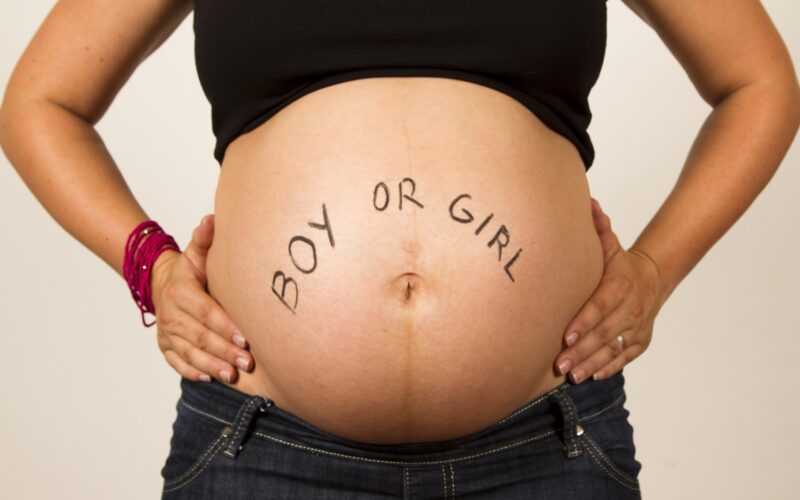I first learned and used a fertility awareness method in my late 20s to choose the sex of my baby. Apparently, it worked! In any case, we got our girl. Then I went back to good old contraception; it just didn’t occur to me to do otherwise. Fast forward 15 years, when I finally realized that I could have used the same method to continue my family planning. Here is the story…
In 2008, my husband, Gerard, told me that we should try Natural Family Planning, aka NFP, aka Fertility Awareness Methods. Neither one of us had a clue what it was, but he heard mention of it and it sounded like a good idea to him. We were already in our mid-40s with teenage children.
I’d heard mention of NFP only once before, maybe back in the late 90s. I couldn’t imagine how avoiding pregnancy could ever be “natural,” but I had no curiosity about it at the time, no interest in fixing what didn’t seem to me to be broken.
But at Gerard’s suggestion, he and I made an appointment with an NFP trainer. She began with the basics, explaining how you begin by figuring out what day you ovulate. You do that by learning to read the signs of your body, in particular the cervical mucus. Then to avoid pregnancy, you simply skip intercourse during the key days closest to ovulation.
“Wait a minute! I know how to do that!”
That’s what I blurted out, after the first few minutes of what I had assumed would be my first lesson in NFP. I already knew all about charting.
Back in 1992, I had used the Shettles method, described in the book How to Choose the Sex of Your Baby, to conceive our little girl. The method entirely depends on determining the day of ovulation.
In the book, I learned about the 3-6 day “fertile window” of a woman’s cycle, outside of which conception is physically impossible. Then I discovered exactly how many days before or after ovulation that intercourse could result in a pregnancy and which days were most likely to produce a girl or boy.
I began charting my cycles in January. A couple of months passed without results, probably because we were so eager to get a girl that we were too far off the edge of the fertile window.
Then on April 5, I conceived; that date was confirmed later by an early ultrasound. April 5 was the 4th day after intercourse—the exact day I had expected ovulation and conception, and my best bet for conceiving a girl. I had no doubt I’d met my goal and started shopping for pink baby clothes. Indeed, on Dec. 30, our little girl made her appearance.
Swiss Army knife of your fertility
I won’t give away all the secrets of the method here, but I can tell you that the male-producing Y-chromosome-bearing sperm are smaller, swim more quickly, and are viable longer than the X-bearing sperm that produce a girl. When you know the date of arrival of the egg, it gives you flexibility to work with the known facts to achieve your goal.
Shettles’ method claims to be the one “best supported by scientific evidence.” Some dispute that. All I know is it worked for me. Or maybe I just got lucky. I had a 50-50 chance, after all. Either way, the point is that knowledge of what day you ovulate is a multi-purpose tool.
Not only can you use charting know-how to try to possibly increase your chances in choosing the sex of your baby, or achieve pregnancy in general, but you can also use it to avoid pregnancy. Awareness of your fertility helps you work with your body to meet your own goals, naturally. One of the even more amazing things about fertility charting is that the data your chart generates can indicate where things may be amiss in your cycle and how to treat the root problem.
This ultra-practical knowledge has been available to women for decades, but most women are missing out. A study out just last month, reported by the National Center for Biotechnology Information, showed that 47% of 125 women surveyed didn’t even know what ovulation was.
Letter to my 27-year-old self
Before I learned about NFP just a few years ago, it had never occurred to me that I could continue to use the knowledge of my fertility I’d gained through the Shettles method to avoid pregnancy. Instead, I used various forms of artificial birth control for years. I’d been conditioned to rely on devices and drugs to battle the not-so-mysterious power of my fertility, instead of making use of my own solid knowledge to live in harmony with it.
By the time I realized where I’d missed out, it was pretty much too late for me. I was barely fertile anymore. If I could send a letter back to my younger, I’d include advice to open my eyes earlier.








That “old men, misogynistic” Church was right “from the beginning”. Catholics with large families don’t have many children because they don’t know about birth control pills. They have them because they choose to, and when they choose to have a pause, they don’t do it in a way that harms the wife and mother, either.